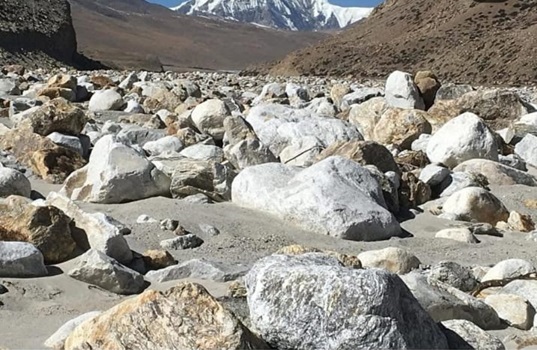An expedition team from the Sikkim government’s Science & Technology Department arrived in Muguthang, located in North Sikkim’s Lhonak Valley, on Wednesday to assess the impact of glacial floods and explore potential mitigation strategies. The team’s investigation focused on determining whether the behaviour of Lhonak Lake aligns with the typical patterns of glacial floods, which are known for carrying debris, sediment, and boulders, often with devastating consequences.
Officials said the team not only studied the immediate effects of the floods but also examined the region’s geology and river discharge to evaluate the feasibility of constructing flood retention structures. The goal is to gather crucial data that will help inform future flood management strategies for the area, which has been prone to such events in recent years.
Organized by the Government of Sikkim, the expedition aims to enhance understanding of the region’s vulnerability to glacial lake outburst floods (GLOF) and devise effective preventive measures. The team is expected to return to Gangtok on December 5, 2024, to present its findings.
This follows a tragic GLOF event last year when the South Lhonak Glacial Lake burst in the dead of night, causing the Teesta River to rise by 20 feet (6.1 meters). According a news wire, the flood resulted in significant loss of life, with around 40 people confirmed dead, over 70 missing, and 22 others injured. Additionally, earlier this year, incessant rainfall triggered multiple landslides in Mangan district in North Sikkim, claiming six lives and leaving approximately 1,500 tourists stranded.















